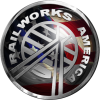DanSSG wrote:if there is much (AI) rolling stock in your environment.
^ This is an often overlooked issue in my opinion. RW models, particularly those of more modern production, really push the limits of what the old DX9 engine can do and if you start adding a lot of AI and static trains in a limited space (like a big freight yard), the frame rate can get hit badly. This is *probably* also the reason why DTG's own scenarios generally don't have very much static and moving trains -- they have to make sure that they work for everybody even those with older PCs.
There are two workarounds you can use if you want to use a good amount of trains in your scenario but not sacrifice too much performance for it:
1) reduce the number of different models you are using. A single boxcar model gets rendered only once, no matter how often it is used in a consist. Note that this does *not* apply to repaints of the same model, those are each a unique model for the renderer even if they are derived from the same base model.
2) use low-poly, low-detail cars to fill distant tracks or even AI trains -- if you'll excuse the shameless plug, you can find some very low-detail "yard filler" models on my website or included in the Portland Terminal or VNHRR Springfield Line routes. These are very simple and use only tiny textures, they look pathetic but you can absolutely fill your yards with them and won't notice any performance issues.
Another area to look into if you need better performance are weather patterns. The 3D skies (those "Silver Lining" weather patterns) look lovely, but they can absolutely kill your frame rate if there are too many clouds around. This might also be a reason why QuickDrive tends to work poorly on some routes, it defaults to using 3D weather and if the route is already pushing the limits (like Stevens Pass admittedly does), the added impact of 3D weather might just be enough to cause bad performance issues.
Cheers
Michael
